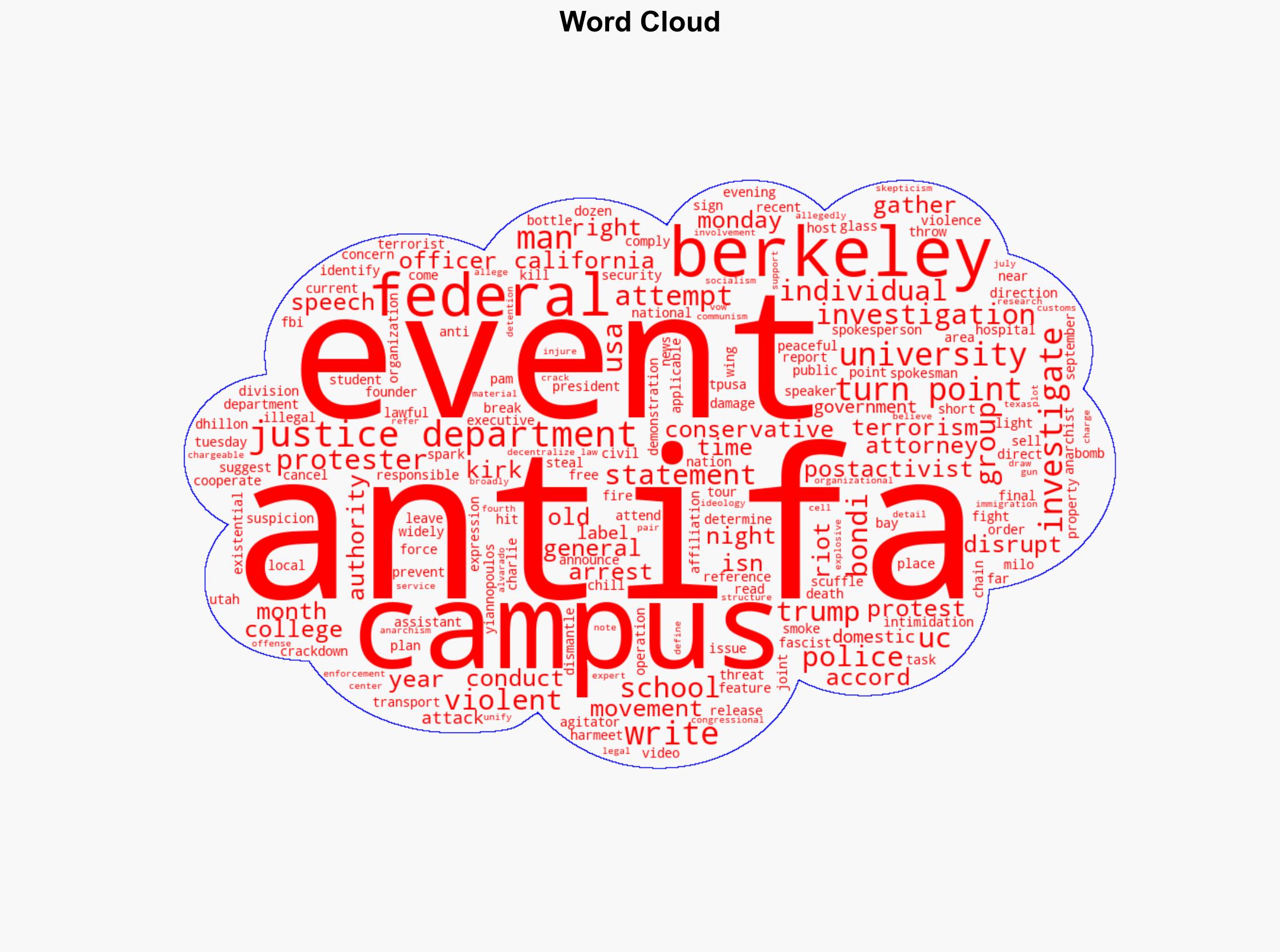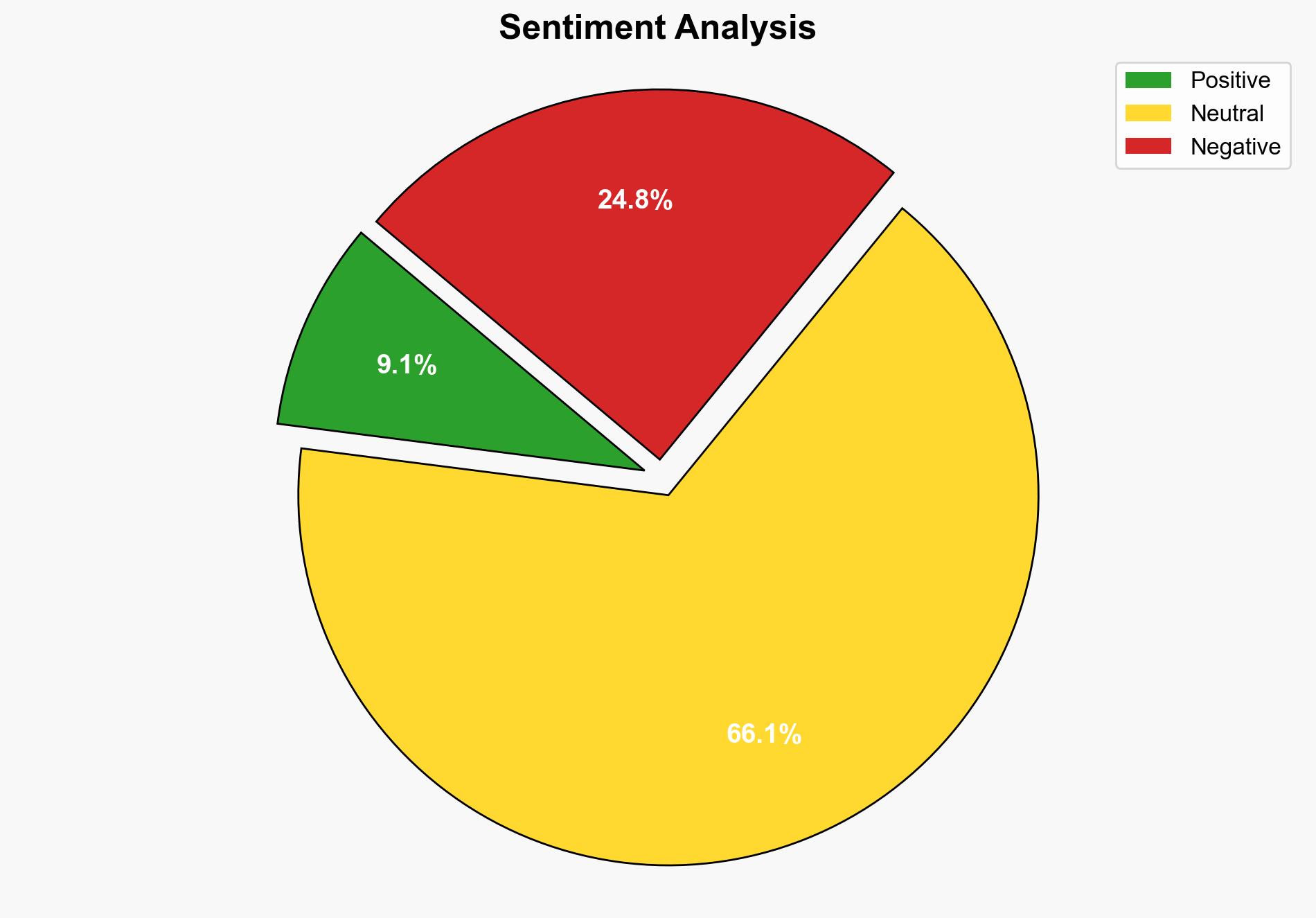DOJ says it’s investigating violent riots at UC Berkeley Turning Point USA event – CBS News
Published on: 2025-11-12
AI-powered OSINT brief from verified open sources. Automated NLP signal extraction with human verification. See our Methodology and Why WorldWideWatchers.
Intelligence Report: DOJ says it’s investigating violent riots at UC Berkeley Turning Point USA event – CBS News
1. BLUF (Bottom Line Up Front)
The most supported hypothesis is that the DOJ’s investigation into the UC Berkeley riots is part of a broader strategy to address perceived threats from left-wing groups, particularly Antifa. This aligns with recent federal actions and rhetoric. Confidence level: Moderate. Recommended action: Monitor developments for potential escalation in political and social tensions, and prepare for increased security measures at similar events.
2. Competing Hypotheses
Hypothesis 1: The DOJ investigation is primarily a response to the specific violent incidents at UC Berkeley, focusing on maintaining law and order and ensuring campus safety.
Hypothesis 2: The investigation is part of a broader federal strategy to target and dismantle Antifa and similar groups, as indicated by recent executive orders and public statements by federal officials.
Hypothesis 2 is more likely given the context of recent federal actions against Antifa, including the executive order labeling it as a domestic terrorist organization, and the DOJ’s emphasis on Antifa-related activities in its communications.
3. Key Assumptions and Red Flags
Assumptions: The DOJ’s actions are based on credible intelligence regarding Antifa’s involvement in the riots. The investigation will be conducted impartially and based on legal standards.
Red Flags: Potential bias in framing Antifa as the primary threat without substantial evidence. The risk of politicization of law enforcement actions. The possibility of mischaracterizing decentralized protest movements as organized terrorism.
4. Implications and Strategic Risks
The investigation could exacerbate political polarization and lead to increased tensions between conservative and liberal groups. There is a risk of retaliatory actions from both sides, potentially escalating into more widespread unrest. Additionally, the focus on Antifa might divert attention from other potential threats, including right-wing extremism.
5. Recommendations and Outlook
- Actionable Steps: Increase intelligence gathering on both left-wing and right-wing extremist groups. Enhance communication and coordination between federal and local law enforcement agencies.
- Best Scenario: The investigation leads to the identification and prosecution of individuals responsible for violence, reducing future incidents.
- Worst Scenario: The investigation is perceived as politically motivated, leading to increased unrest and further polarization.
- Most-likely Scenario: Continued monitoring and sporadic incidents of violence at politically charged events, with incremental improvements in law enforcement responses.
6. Key Individuals and Entities
Pam Bondi (Attorney General), Charlie Kirk (Founder of Turning Point USA), Harmeet Dhillon (Assistant Attorney General, Civil Rights Division), President Trump.
7. Thematic Tags
National Security Threats
Structured Analytic Techniques Applied
- Cognitive Bias Stress Test: Expose and correct potential biases in assessments through red-teaming and structured challenge.
- Bayesian Scenario Modeling: Use probabilistic forecasting for conflict trajectories or escalation likelihood.
- Network Influence Mapping: Map relationships between state and non-state actors for impact estimation.
Explore more:
National Security Threats Briefs ·
Daily Summary ·
Methodology





